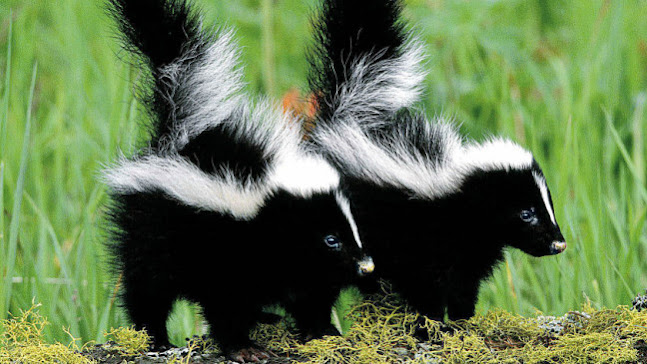Skunks are animals with black and white fur that may readily be identified. Skunks come in ten different species, nearly all of which reside in North and Central America. They may live in a variety of environments, including open, shrubby, woodland, and urban. Skunks are not on any endangered species lists.
Skunk Facts to Consider:
Skunks are omnivores, meaning they consume both plants and animals. Fruits, insects, worms, reptiles, and rodents are among their favorite foods.
Because skunks consume honeybees, they often assault beehives.
Skunks are a tiny kind of mammal. They may grow to be 8-19 inches tall and weigh up to 14 pounds.
When the animals are threatened, two glands near their anus generate an odorous material that is discharged. The victims will not be harmed by this chemical, but they will be unable to get rid of the odor for the following several days.
Before spraying the victim, the skunk will turn around, raise its tail, hiss, and stomp with its feet. These are the warning signals that accompany the use of pesticides.
Skunks may spray their oily, odorous material up to 10 feet away.
Coyotes, bobcats, and owls are their deadliest foes.
Male skunk is called buck, female - doe, and baby skunk - kit.
Skunks can withstand snake bites.
Their vision is weak, but their senses of smell and hearing are exceptional.
They can only run at a speed of ten miles per hour.
During mating season, a single male will contact several females.
A woman's pregnancy lasts between 7 and 10 weeks, and she has 2 to 10 children. Mother looks after her children.
Skunks may spread rabies.
In the wild, skunks may survive for up to three years. They may live in captivity for up to ten years.

Comments
Post a Comment